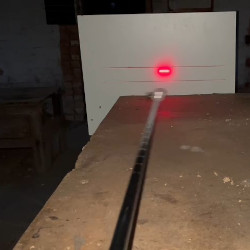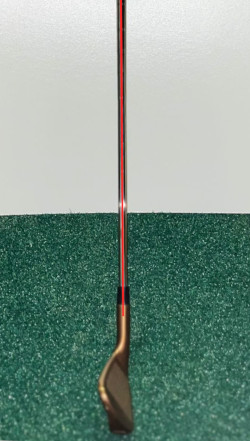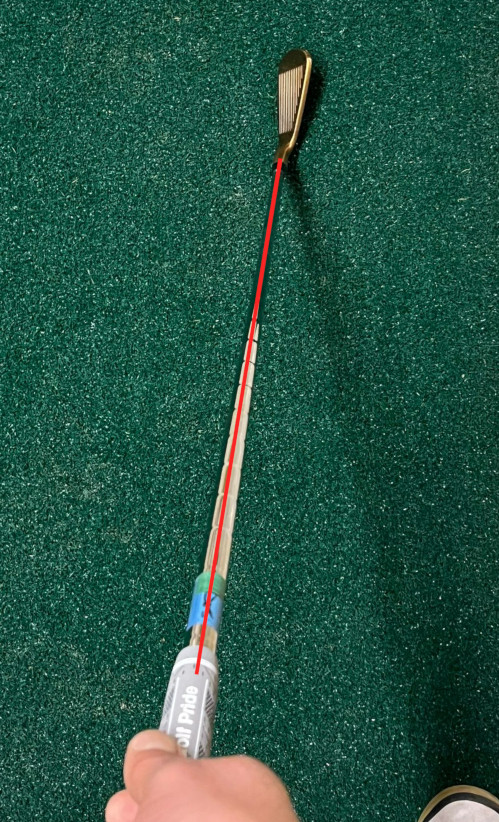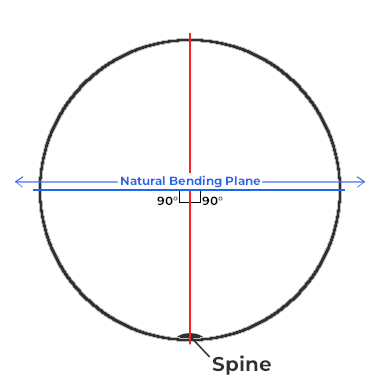The Importance of Spine Alignment in Golf Clubs
Categories
Recent Posts

Every golf club shaft has a spine, unless it has been specifically manufactured in a way that one would not inadvertently be created. This has been achieved by one company who have patented the process of producing a graphite shaft with no spine, however at $500 a pop that's a hefty price tag, especially if you carry 2 or 3 woods in your bag.
Graphite shafts have less of a spine, but they still have one. Created by the uncontrolled overlap of material as it is wrapped around the mandrel.
Steel shafts, due to the manufacturing process have a much more prominent spine which is probably almost impossible to irradicate, and even if it was, it's probably not worth the cost of the machinery and implementing a new process of manufacture.
So, why is it so important?
The spine of a golf club shaft is the thickest, most rigid "line" along the shaft from the butt to the tip. Let's take a look...
For the purposes of this explanation, the spine has been exaggerated in this diagram. In reality, because shafts are so thin you rarely can see the spine with the naked eye, but it definitely is there.
Opposite to the spine, at 180° or 12 o'clock, being supported by the spine is also very rigid.
Spine Strength & The Natural Bending Plane
Because the spine is the stiffest part of the shaft, flexing it at precisely 90 degress from the spine will encourage the least amount of interference on the lateral flex of the shaft, this is known as the Natural Bending Plane. Assuming we flex the shaft in line with the Natural Bending Plane, the spine will not adversely spring the shaft back on an out of line plane.
But once we flex the shaft towards or away from the spine (i.e. towards 12 o'clock or 6 o'clock), the spine will become loaded with energy and upon release, will activate and spring the shaft in the opposite direction to which it was originally flexed, but not precisely in the opposite direction. It is here that shafts that are not aligned during fitting cause golfers the most pain.
For example, let's say we have a shaft of uniform wall thickness with no spine and we ping the shaft at 135 degrees from the spine (i.e. towards 10:30). We would expect it to spring back at exactly 45 degrees (i.e. 4:30) and continue flexing back and forth on that line. Basically, any angle you could flex the shaft would be a Natural Bending Plane. However, with the presence of a spine and it's interference, the shaft tip will spring back closer toward 6 o'clock, and then will suffer from oscillation, causing the shaft tip to spring back and forth in an inconsistent manner.
Once you have seen the spine alignment process for yourself, and what happens to a shaft's tip when the spine is not aligned, you will immediately understand the impact clubs without aligned spines can have on your game.
Captain, We've Lost Control
As you can imagine with a misaligned spine, during the transition and downswing (when the flex and spring of the shaft is well under way), plus the addition of gravity and clubhead weight to the equation, the position of the clubhead and angle of the face at the bottom of the downswing is not under any kind of control. Any deviation from the Natural Bending Plane will cause the shaft to spring back uncontrollably, meaning there is a much greater chance that the angle of attack and squareness of the club face will not be optimal at the point of impact with the ball.
The result: a fat shot possibly, or a push, maybe a pull, hook or slice. "Argh, I pulled it!" or "Eeek, I've really sliced that one!" are common phrases you might use around the course. But it wasn't you. It was the misaligned spine. And because you cannot be sure where the spine is on each of your clubs, you cannot find any consistency when alternating between clubs for each shot.

 Regaining Control & Taking Advantage
Regaining Control & Taking Advantage
Aligning the spine correctly with the clubhead and face minimises the inconsistency that is promoted by shafts that have not been spine aligned.
When we install shafts into the clubs with spines aligned, we actually fit them 180° to that which is shown in the diagram above. When looking at the shaft from the butt end as in the diagram, the spine will be North, closest to the club's toe. The reason for this is that the weight of the clubhead is concentrated against the most rigid plane of the shaft and that prevents the clubhead from drooping towards the floor, minimising the effect of the clubhead's weight and gravity. This turns the tables and the spine becomes an ally and a real advantage.
Once we have erradicated the unpredictability of our shafts, we are free to balance our swing and tune it in to the correct arc and plane required to flex the shaft as close to the Natural Bending Plane as we can. Once we've achieved that, our delivery of the club head will become much more consistent, and a much higher percentage of well struck shots will materialise.
Conclusion & Last Words
There are many suggestions on the web, suggesting that golf shaft spines should in fact be fitted aligned to the target, but this just does not make any sense. During the backswing, transition and downswing you will be fighting against the spine to load the shaft with energy, and at the point of release, the energy you just put in to the shaft is gobbled up and fought against by the spine itself, thereby not making use of the natural bending plane; the plane which provides the most flex and spring. And a shaft is a spring after all. It is the flex and spring of the shaft which translates to a higher clubhead speed.
If you've had your clubs spine aligned, I'm sure you'll agree that on the whole, your clubs perform more consistently and your average dispersion has been improved. In my experience the difference is noticeable, you hit more shots well and can really tell when you haven't, you just know and most of the time you know exactly what you did wrong. And at the very least, I know it's not my clubs.
It is a shame that major brands pay millions for professionals to use their kit and make so much effort to tell us how the latest club heads are the best ever and come with even more forgiveness, and yet they do not invest a little time into fitting shafts such that they will provide us - the consumers - with the most consistency. In which case we would not require so much forgiveness. I suppose we'd all buy less clubs if they did that.
